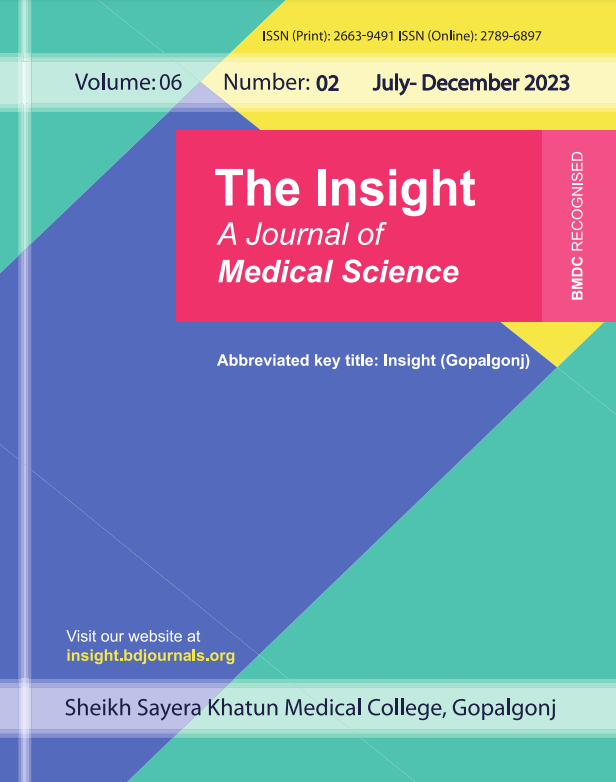Publiée 2024-10-18
Mots-clés
- Type 2 diabetes mellitus,
- lipid profile,
- HbA1C,
- diabetic dyslipidemia
(c) Copyright The Insight 2024

Ce travail est disponible sous la licence Creative Commons Attribution 4.0 International .
Comment citer
Résumé
Introduction: Diabetes mellitus is a common endocrine and metabolic problem all over the world. Type 2 diabetic patients have an increased prevalence of dyslipidemia which commonly manifests as raised low- density lipoprotein (LDL), decreased high density lipoprotein (HDL) or elevated triglycerides (TG) levels and causes public health problem worldwide as well as in our country.
Methods and materials: This cross sectional study was conducted in the Out Patient Department of Shaheed Ziaur Rahman Medical College Hospital from July 2018 to June 2019. A total number of 90 subjects (34 males and 56 females) were selected with the age above 18 year on the basis of exclusion and inclusion criteria. Data were collected in a predesigned structured questionnaire form by us.
Result: In our study, 57.9% male diabetic patients on therapy and 46.7% male newly diagnosed diabetic patients had dyslipidemia. There were no significant difference observed between lipid profile of diabetic patients on therapy and newly diagnosed diabetic patients. In our study, 15.8% male diabetic patients on therapy and 100% male newly diagnosed diabetic patients had HbA1C ≥ 6.5%. Positive correlation was found between HbA1C levels and TG, TC, LDL but HDL level showed negative correlation with HbA1C.
Conclusion: There were no significant difference between lipid profile of diabetic patients on therapy and newly diagnosed diabetic patients but statistically significant difference was found between HbA1C levels of diabetic patients on therapy and newly diagnosed diabetic patients. The pattern of diabetic dyslipidemia was high triglycerides and low high density lipoprotein.



